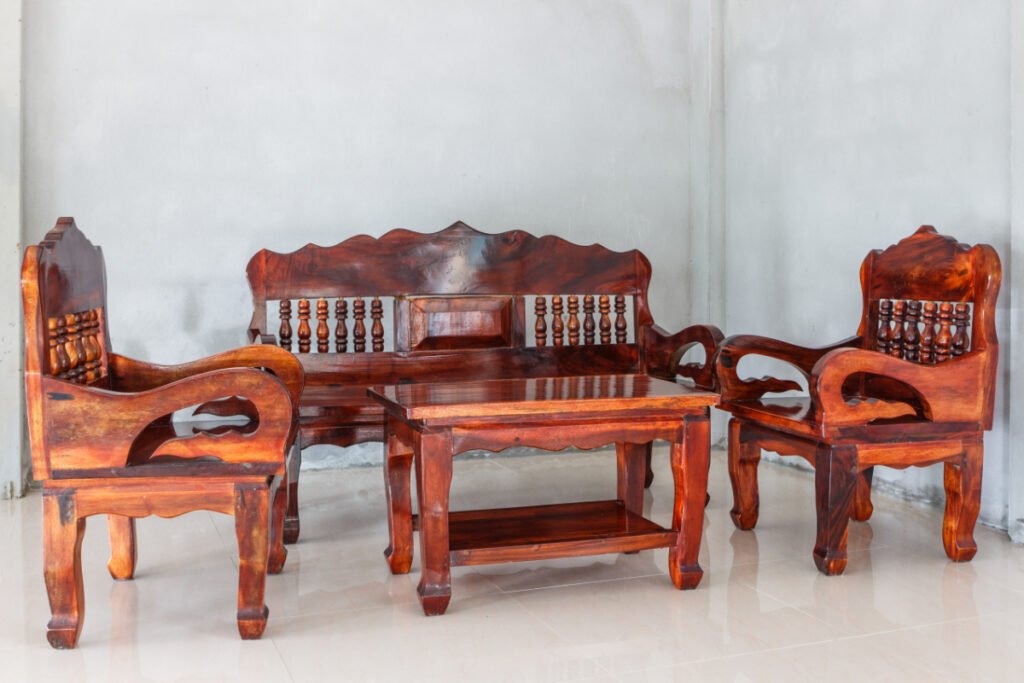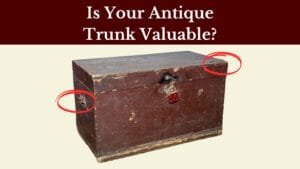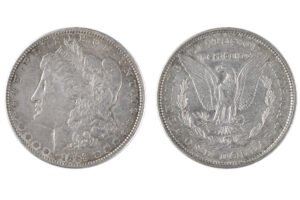As an antique expert, I think collectors mostly need help in identifying and aging antiques like ancient furniture. The reason? Well, sometimes the manufacturing date or brand logo is not there, or the parts are broken. So, how do you age such furniture and value it?
The answer is hidden in the furniture legs! Now, since different eras used different leg styles and carvings, you can use these to spot and price your antique furniture. So, here are 15 antique furniture leg styles you must know about!
Key Takeaways
- Some of the earliest 1700s furniture legs, like the Bobbin or Jacobean legs, have grooved sections and typical Oak inlays.
- If your old furniture legs have spiral or curved designs, they might be the S-shaped, Flemish, or Twisted ones from the 1800s.
- Hand-grooved or embossed Fluted or Reed legs from the 1800s fetch good returns, even up to $1800.
- Get old furniture with flexible Spider, Saber, Cabriole, or Sheraton legs for sturdy, lightweight, and portable sections.
How to Identify Old & Antique Furniture Leg Styles

To check if your furniture leg styles are old, rare, and collectible, observe their designs and look for the given special features:
- Vertical ridges or grooves with fluted carvings on top
- Complex surface patterns like rings, twists, and bulbs
- Spherical but slightly flattened tips and bases
- Carved paws with lion, eagle, or any bird & animal motifs
- Straight or curved legs with a simple Ball, Bracket, or Onion-shaped foot
- Crude Wax, Oil, Shellac, or Lacquer finishes
- Solid wood – Oak, Walnut, Mahogany, Maple & Pine bodies
15 Rare & Antique Furniture Leg Styles Worth Your Money!
Eager to know how different leg styles help track your old furniture’s age? Well, let’s get to it!
1. Old Adam-Style Furniture Legs (1760 – 1790s)

- Furniture Styles: Federal, Empire & Regency
- Popular Collectibles: Pembroke Console table, Hepplewhite chairs & Sheraton Sideboards
Named after its designer, Robert Adam (Scotland), this one has slender legs and a tapering profile. Unlike others, it doesn’t have heavy carvings, but you might see some flutes on the top. Also, collectors love their balance & round, sturdy feet.
How to Identify Them?
- Vertical, parallel grooves with classical urns at the tip
- Greek, Roman & Egyptian motifs at the ends
- Marquetry & Parquetry style inlay designs
- Mahogany, Walnut, or Satinwood finishes
| Adam-Style Leg Products | Estimated Value |
| Sideboards | $500 – 2800 |
| Console Tables | $900 – 3000 |
| Chair / Sofas | $100 – 800 |
| Nightstands | $40 – 600 |
Try to get old Adam legs with Neoclassical urns, medallions, swags, or Greek key motifs for good returns.
2. Bobbin Furniture Legs (1650 – 1700s)
- Furniture Styles: William & Mary, Restoration & Louis XVIII Furniture Styles
- Handpicked Items: Gateleg Tables & Louis XIII Knitting Chairs
Imagine a solid, straight line of linear spools or bobbins. Well, that’s what bobbin furniture legs look like! In fact, most also have symmetrical bulbs, brushed finishes, and caps for more texture. Their tops are simple, often a drop-leaf shape, for a layered look.
How to Identify Them?
- Vertical, parallel grooves with classical urns at the tip
- Alternate square and cylindrical sections for a segmented effect
- Lacquered Oak, Walnut, or Pine bodies
- Round or Oval feet with inlays or classical motifs
| Bobbin Leg Products | Estimated Value |
| Coffee Tables | $100 – 900 |
| Dining & Knitting Chairs | $40 – 1000, as per condition |
| Parlor Tables | $90 – 1200 |
| Washstands | $100 – 600 |
| Desk Tables | $500 – 1500 |
3. Baluster Furniture Legs (1650 – 1700s)

- Furniture Styles: William & Mary, Jacobean & Georgian
- Rare Collectibles: Gateleg Tables, Wine Tables & Corner chairs
Just as the name says, these furniture legs look like a Federal stair baluster. They are very detailed and often have country elements, aprons, and stretchers on top. Also, these have tapered feet for more stability and visual weight.
Top Features:
- Ornamental feet with a Ball, Bun, or Bracket design
- Lacquered Oak, Walnut, or Mahogany bodies
- Small, lathe scrolling on the top and bottom quarters
- Single-piece bodies with Colonial, Victorian, or Revival carvings
| Old Baluster Leg Items | Average Cost |
| Dining, Coffee & Side Tables | $400 – 1000 |
| Sideboards | $400 – 1200 |
| Corner Chairs & Couches | $500 – 2500 |
4. Cabriole Style Legs (1700s – 1780s)

- Furniture Styles: Queen Anne, Chippendale, Louis XV
- Precious Collectibles: Pembroke tables, Chippendale cabinets & Hepplewhite chairs
The Cabriole is the only furniture leg style that curves inwards. So, it has a double-curve, convex top and concave base, just like an S. Also, it looks more feminine, with carved aprons, serpentine fronts, and pierced splats.
Special Traits:
- Decorative Ball, Claw, Pad, or Scroll feet
- Polished Walnut, Mahogany, or Cherry bodies
- Intricate Acanthus Leaf, Vine, Floral & Geometric carvings
- Slanting & top to bottom tapered feet
| Old Cabriole Leg Products | Average Cost |
| Chippendale Drinks Cabinet & Dressers | $500 – 4000 |
| Desks & Buffet Serves | $300 – 2000 |
| Stools & Chairs | $400 – 1200 |
| Writing Bureaus & Ottomans | $100 – 900 |
| Chest of Drawers | $100 – 1200 |
5. Flemish Scroll Furniture Legs (1660 – 1800s)
- Furniture Styles: Louis XIV, Restoration & William & Mary
- Top Picks: Flemish corner chairs & Cabinets
Flemish is another old S-shaped leg of furniture, but it’s a bit smaller and more spiraled, just like a seashell. Yes, it might have a straight section between the scrolls, but that’s just for extra strength. Also, you’ll see a mix of Baroque & European designs with this one!
Rare & Collectible Features:
- Superior Gothic or Italian Renaissance construction
- Dark polishes and lacquers to highlight the carvings
- Carved Floral or animal faces at the top
| Old Flemish Leg Items | Estimated Value |
| Armchairs & Corner chairs (1720s) | $500 – 1800 |
| Flemish Cabinets & Dressers | $900 – 1800 |
| Chests & Sideboards | $1000 – 4000 |
6. Fluted Furniture Legs (1800 – 1900s)
- Furniture Styles: Hepplewhite, Sheraton & Empire
- Top Collectibles: Empire Pedestals or Tables & Sheraton Sideboards
If your furniture legs have full-length, vertical, and parallel grooves, they must be the 1800s, fluted ones. Such legs are linear and straight, often with concave channels at the base. But, these might have some curved pedestals, each with carved floral or animal heads at the top.
How to Identify Them?
- Simple or Ornamental Ball, Bun, or Bracket feet
- Polished Mahogany, Walnut & Satinwood bodies
- Neoclassical elements – Urns, Swags, Medallions & Greek motifs
- Concave or Embossed grooves
| Old Fluted Leg Products | Estimated Price |
| Sheraton Sideboards & Chests | $500 – 2000 |
| Empire Tables & Pedestals | $900 – 3000 |
| Chippendale Writing Desks | $900 – 2000 |
| Coffee, Corner & Side Tables | $100 – 900 |
7. Old Jacobean Furniture Legs (1600 – 1625)

- Furniture Styles: Tudor, Restoration & William & Mary
- Unique Items: Gateleg tables, Tudor chairs & English Oak Cabinets
Jacobean furniture legs are quite ornate and monarchial in themselves. Like, they have bulbous or melon-shaped turnings with cups and covers for a layered look. But you can also spot them by their trumpet-turned, baluster, bun & block shapes.
More Collectible Features:
- Simple Ball, Bun & Bracket feet
- Brushed Oak, Walnut, or Mahogany bodies
- Carved accessories – Aprons, Plank tops & Stretchers
- Low-relief Italian Renaissance carvings and Architectural motifs
| Antique Jacobean Leg Products | Average Value |
| English Oak Gateleg Tables | $500 – 1000 |
| Trestle or Pop-up Dining Tables | $500 – 1500 |
| Single chairs & Double stretcher sofas | $400 – 1200 |
8. Marlborough Furniture Legs (1700 – 1780s)

- Furniture Styles: Georgian, Chippendale & Louis XVI
You can spot the Marlborough furniture legs by their straight, square, and hefty sections. Most are plain and polished, but some rare ones might have flutes or light carvings. Also, these have single-piece legs, often with extra foot pads or seals at the base.
Unique Features:
- Straight or Slightly tapered shape with similar widths and lengths
- Local wood – Mahogany, Walnut & Oak sides
- Might have serpentine fronts and brass block feet
| Vintage Marlborough Leg Products | Average Value |
| Georgian Oak Side Tables (1780s) | $900 – 5000 |
| Dressers & Cabinets | $400 – 1000 |
| Side, Corner & Dining Chairs | $600 – 2400 |
9. Reeded Furniture Legs (1800s – 1850s)
- Furniture Styles: Neoclassical, Regency, Empire
- Unique Items: French Gilt Furniture, Indian Bone Inlay Furniture, etc.
Reeded furniture legs almost look like fluted legs at first glance, but their reeds are convex and often taper towards the bottom. And since it’s from the colonial era, you might see luxurious Rosette or Acanthus leaf carvings at the base.
More Collectible Characteristics:
- Vertically carved grooves or ridges at regular intervals
- Intricate Spade, Bracket, or Bun feet
- Superior Mahogany, Walnut, or Rosewood sides
| Vintage Reeded Leg Items | Average Price |
| French-style End & Center tables | $300 – 1200 |
| Ottomans, Stools & Benches | $700 – 1400 |
| Side beds & Dressers | $500 – 1800 |
| Reeded Bar Top Island Legs | $100 – 300 |
10. Saber Furniture Legs (Early 1900s)

- Furniture Styles: American & Empire
Saber furniture legs will remind you of curved swords and flared daggers. These are usually square or round, often with decorated bulbs at the center. Besides, they have a c-profile with brass paws or spade feet for balance.
How to Identify Them?
- Classical Greek & Roman influence – urns, column-like detailings, and brackets
- Might have lion-head, wreaths, and sword-like carvings
- Symmetrical legs with a small, inward turn at the tips
| Vintage Saber Leg Products | Average Price |
| End, Corner & Dining Chairs | $100 – 1200, as per condition |
| Stools & Benches | $70 – 800 |
| Center & Coffee Tables | $700 – 1800 |
11. Old Spider Legs (1800 – 2000s)

- Furniture Styles: Georgian, Regency, Arts & Crafts
As you might guess, these legs look like a spider with a central stem and 4-5 branched legs. These are small, mostly for portable furniture & stools; you can also find rare models with inbuilt castors or flexible feet. Also, these have ornate carvings on the stem.
Unique Traits:
- Found in a group of three or four legs with spade feet or no feet at all
- Stained Maple, Walnut, or Rosewood bodies
| Old Spider Leg Products | Average Price |
| Corner & Coffee Tables | $500 – 2000 |
| Work Chairs & Small desks | $90 – 800 |
| Stools & Small Seaters | $50 – 600 |
You’ll get spider leg designs with the new 19th-century models too! So, rub your finger and check for brushed or lacquered finishes for an old make.
12. Spiral Furniture Legs (1700s – 1800s)

- Furniture Styles: Restoration, Federal & Victorian
Spiral legs are twisted, continuously curved legs from India. These might be round or square but have a continuous taper from top to bottom. Other than that, these might have uniform, uneven, or concentric spirals as per the region and artisans.
Unique Traits:
- Stained or Painted Oak, Rosewood, or Mahogany bodies
- Uniform Ball, Bun, or Claw feet
| Old Spiral Leg Items | Estimated Price |
| Coffee & Center Tables | $500 – 1400 |
| Simple Spiral Oakwood Legs | $30 – 150 |
| Pedestals & Nightstands | $300 – 1000 |
13. Victorian Furniture Legs (1860s)

Victorian furniture legs are known for their elaborate Gothic, Rococo, and meshed carvings, costing $500 – 6000. These might be straight, curved, or tapered, but you can spot them by their simple bun-feet and multi-colored finishes.
14. Trumpet Legs (1800s)
Trumpet legs look like turned and tapering Baluster legs with Spanish, Ball, or Bun feet. Also, these have Serpentine stretchers, domical feet, and castors, usually costing $30 – 700.
15. Sheraton Legs (1870s)
You can spot Sheraton legs by their plain sections, fluted or reeded edges, and contrasting veneers. Other than that, you might see painted or lacquered Satinwood bodies and prices of $150 – 600 for one.
What Era Are Curved Furniture Legs?
Most curved furniture legs are from the 1800s or 1900s, mainly Queen Anne or Chippendale style. But some of the rare Cabriole leg ones date back to the 1700s Louis XV style!
How Do You Clean Old Furniture Legs?
You can simply wipe your furniture legs with oil, soap, and warm water. But, if they are too greasy or moldy, better scrub them off with a soft-bristled toothbrush.
Aging antique furniture could be a bit tough for a beginner. So, here’s a way out! Compare its furniture leg styles with our guide above, and check its design years. And it’s not just the age; you’ll also find out about your furniture’s basic design style and cost!
If you want expert tips on identifying and valuing different old furniture items, I’ve shared detailed guides on ‘Old Windsor chairs,’ ‘Rocking chairs,’ ‘Hoosier cabinets,’ and ‘Bassett furniture.’
Note: This article is intended for informational, educational, and entertainment purposes only. Some images are illustrative and may not represent actual brands, products, or related entities. All trademarks, product names, brand logos, packaging, and other intellectual property referenced remain the exclusive property of their respective owners. Any brand mentions or references are provided solely for descriptive and educational context and do not imply any formal or commercial association.










